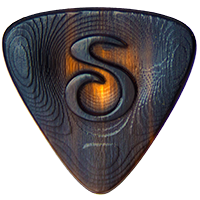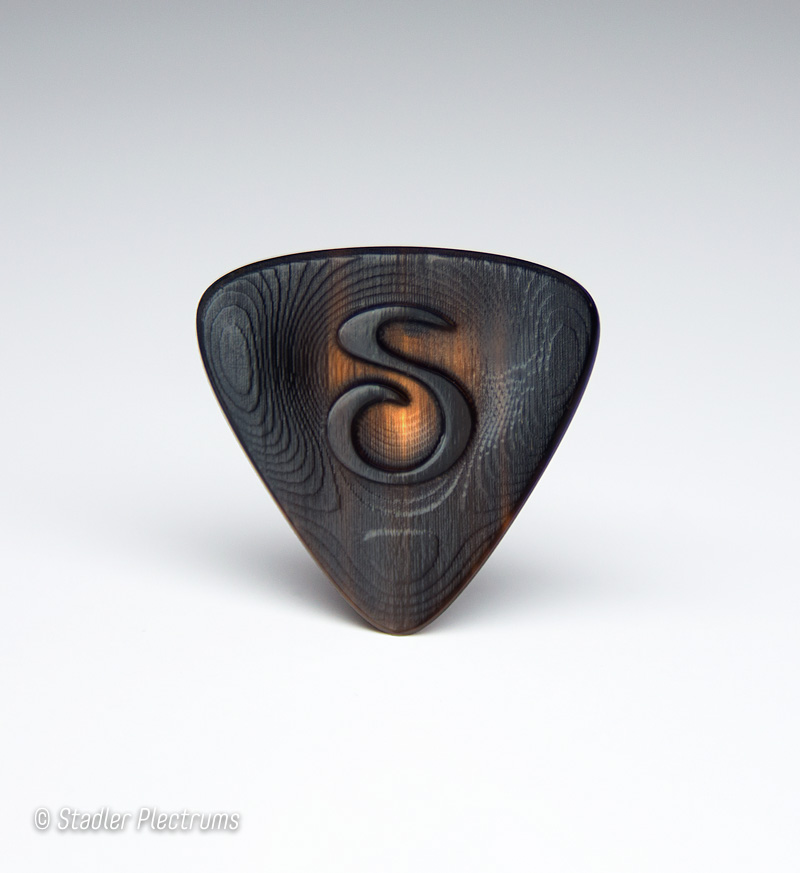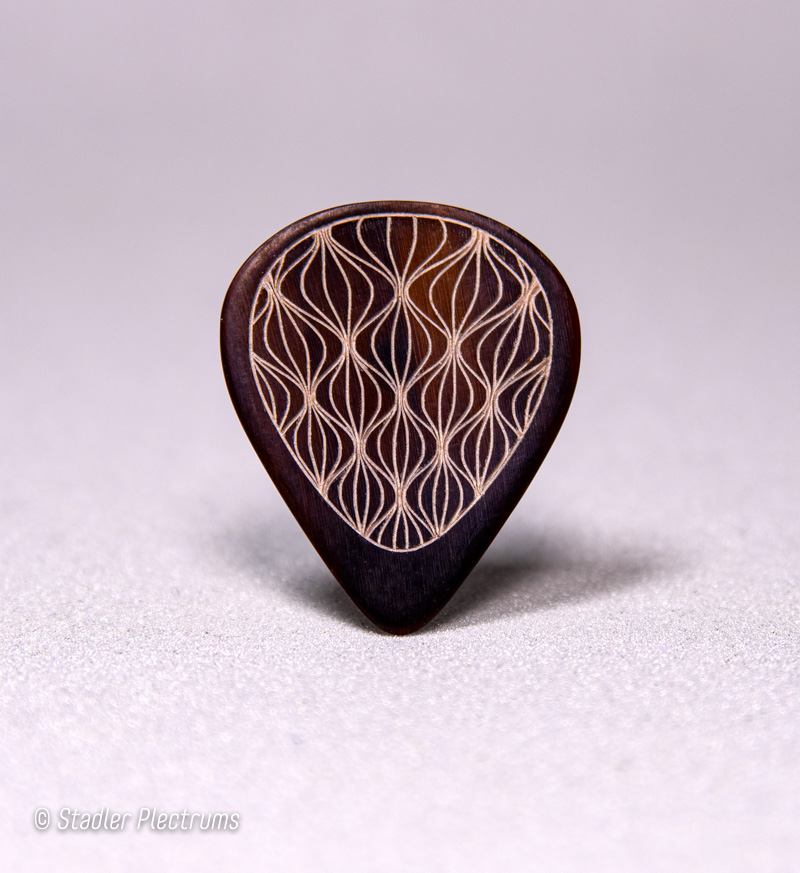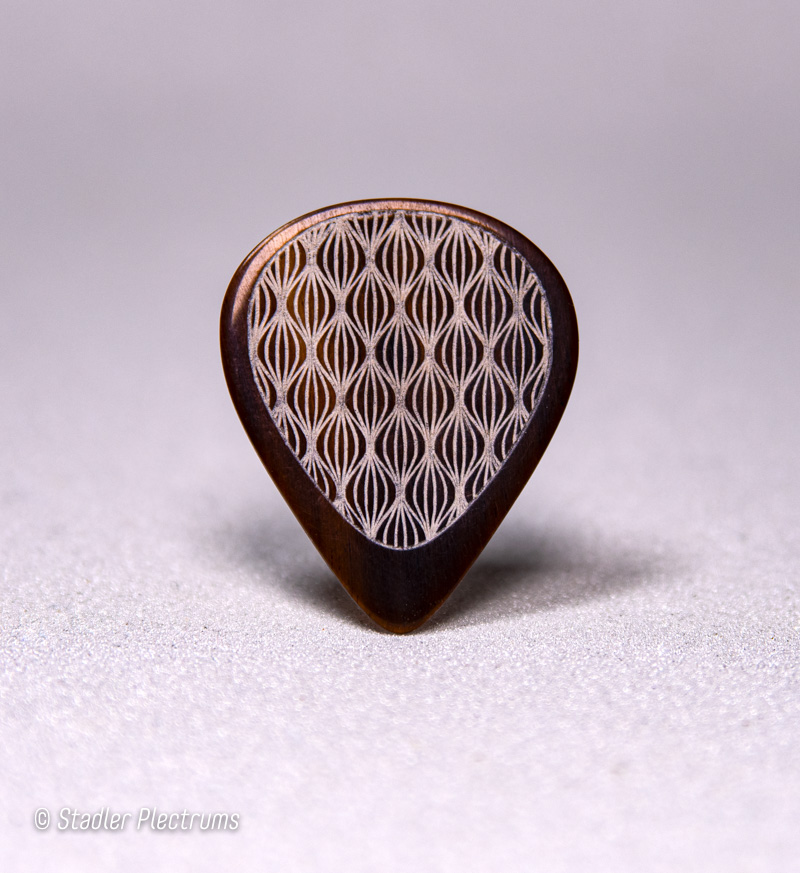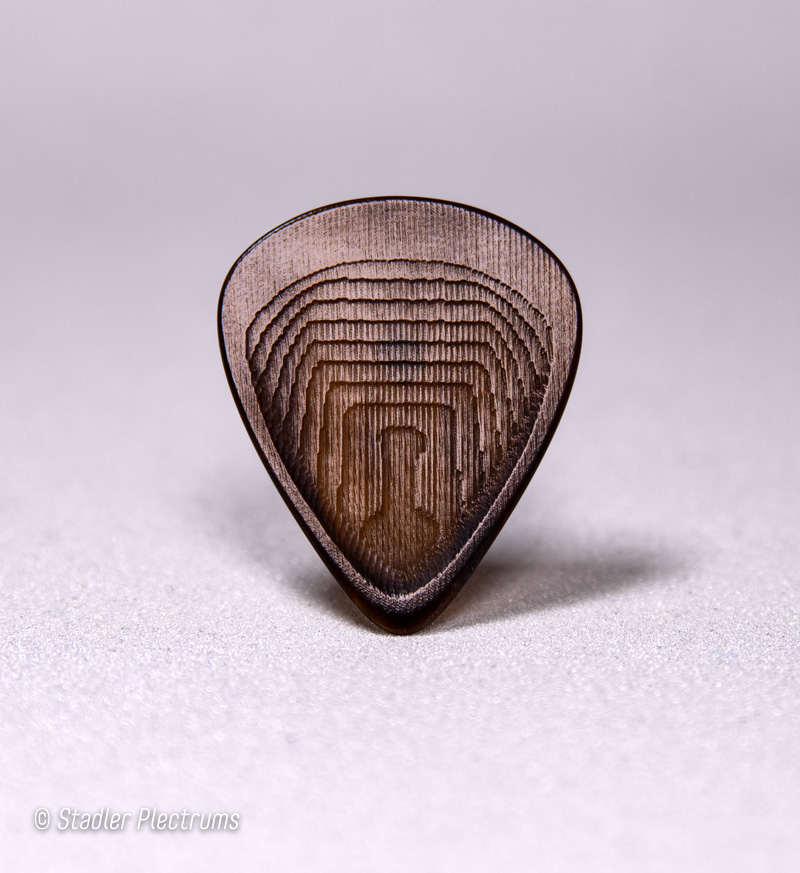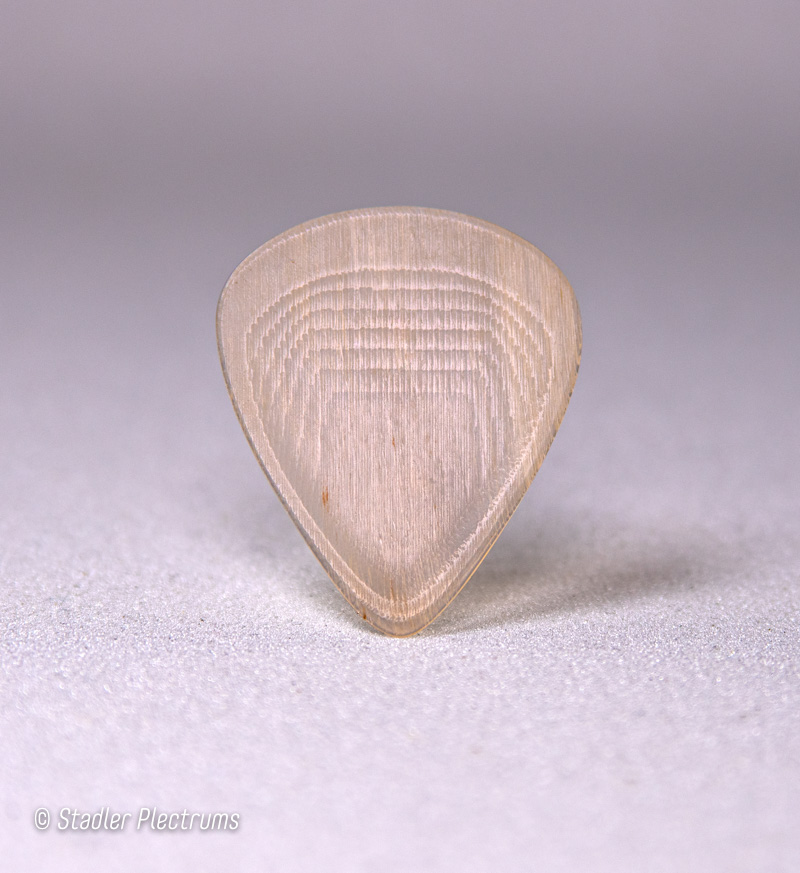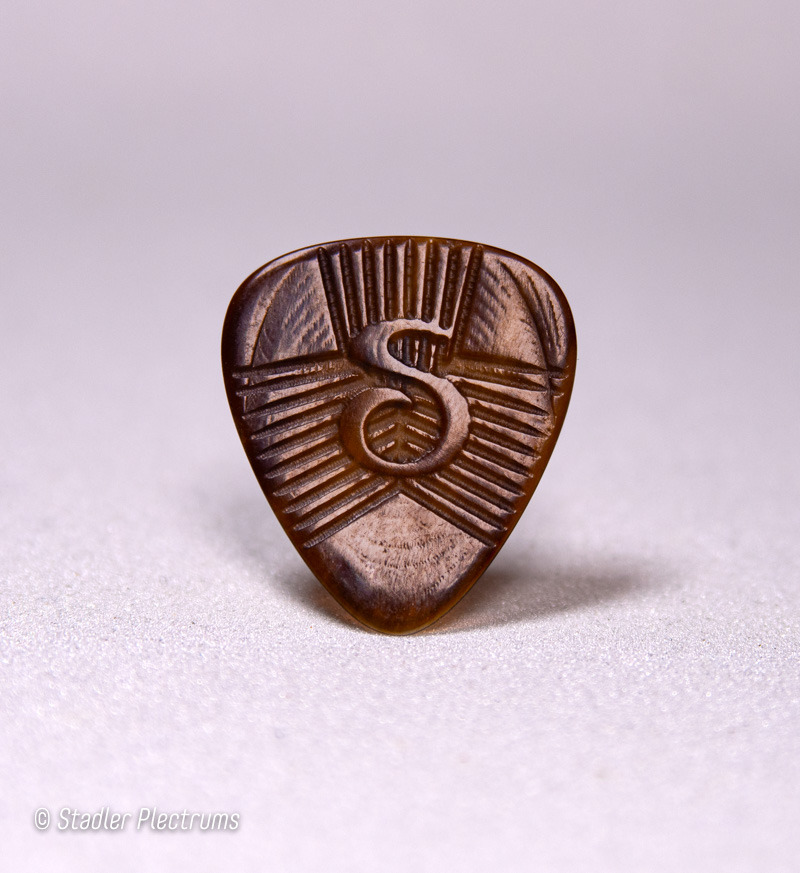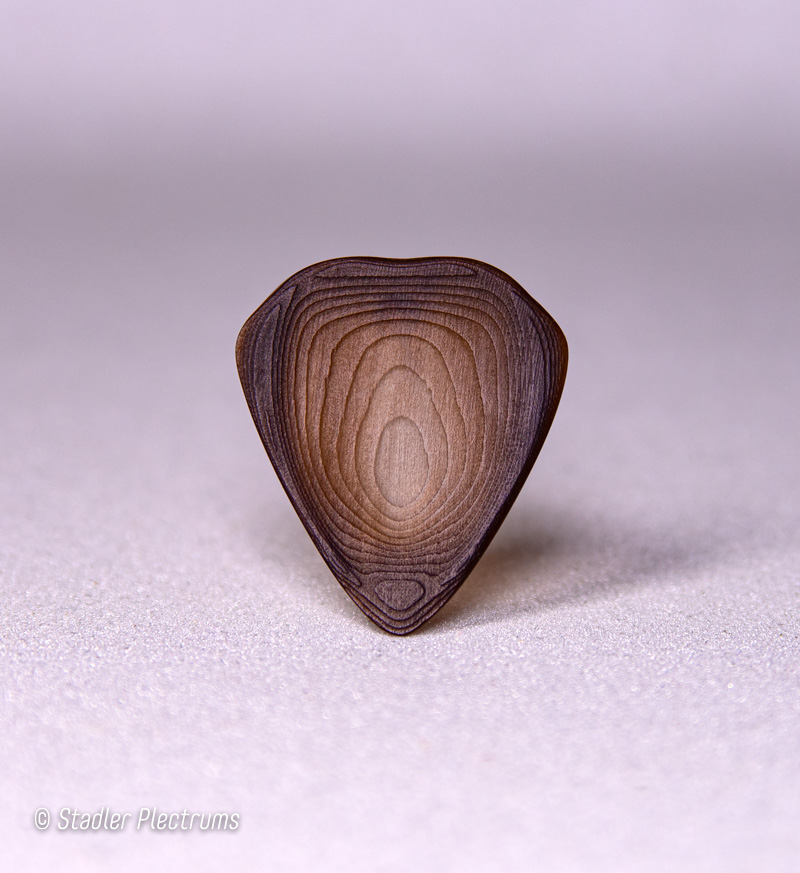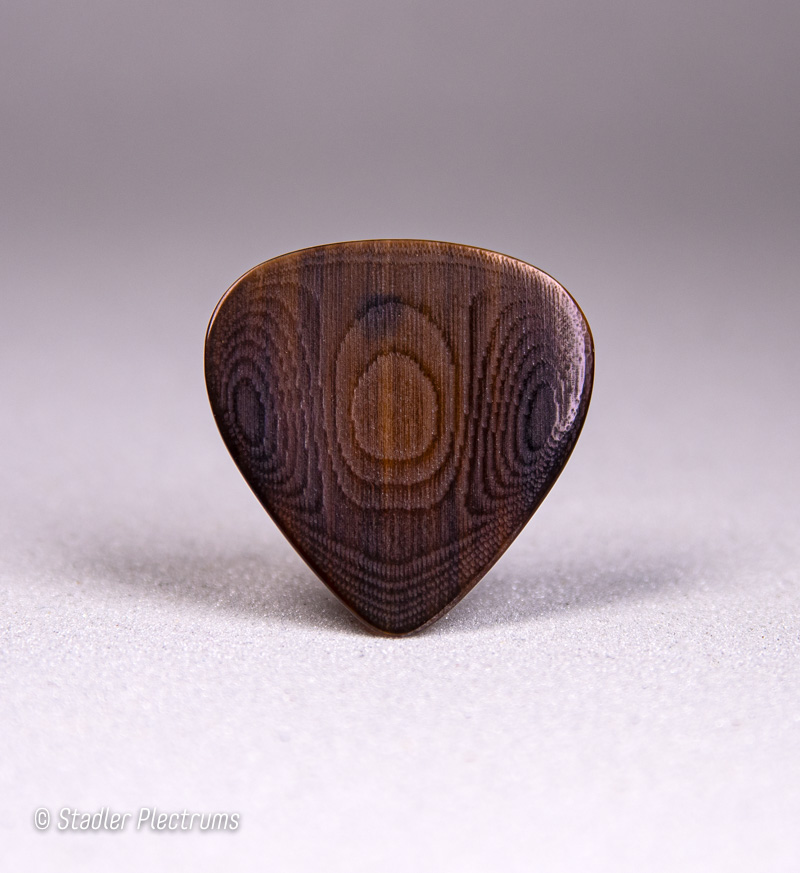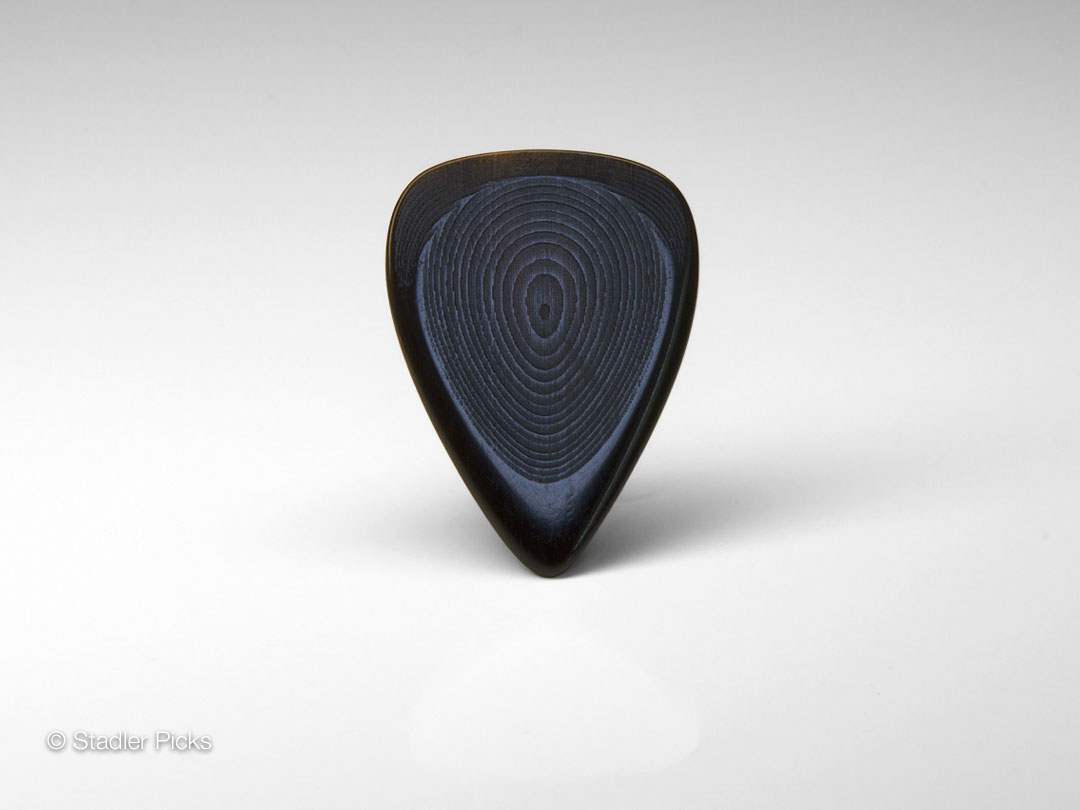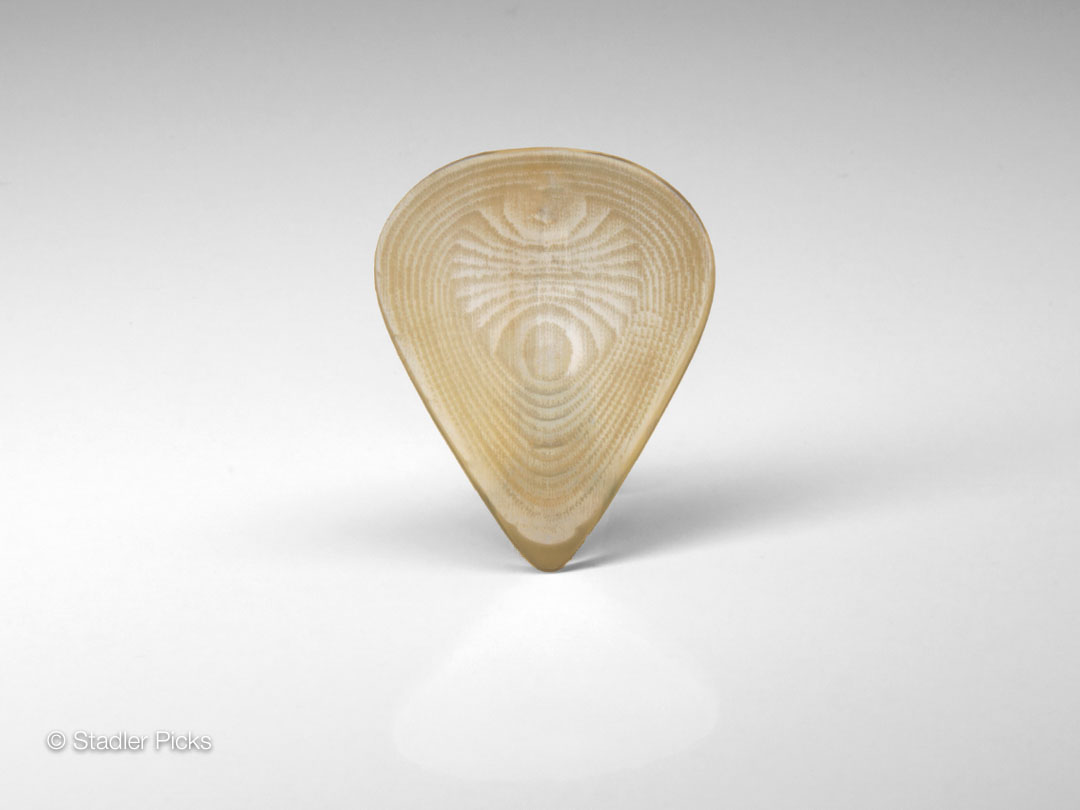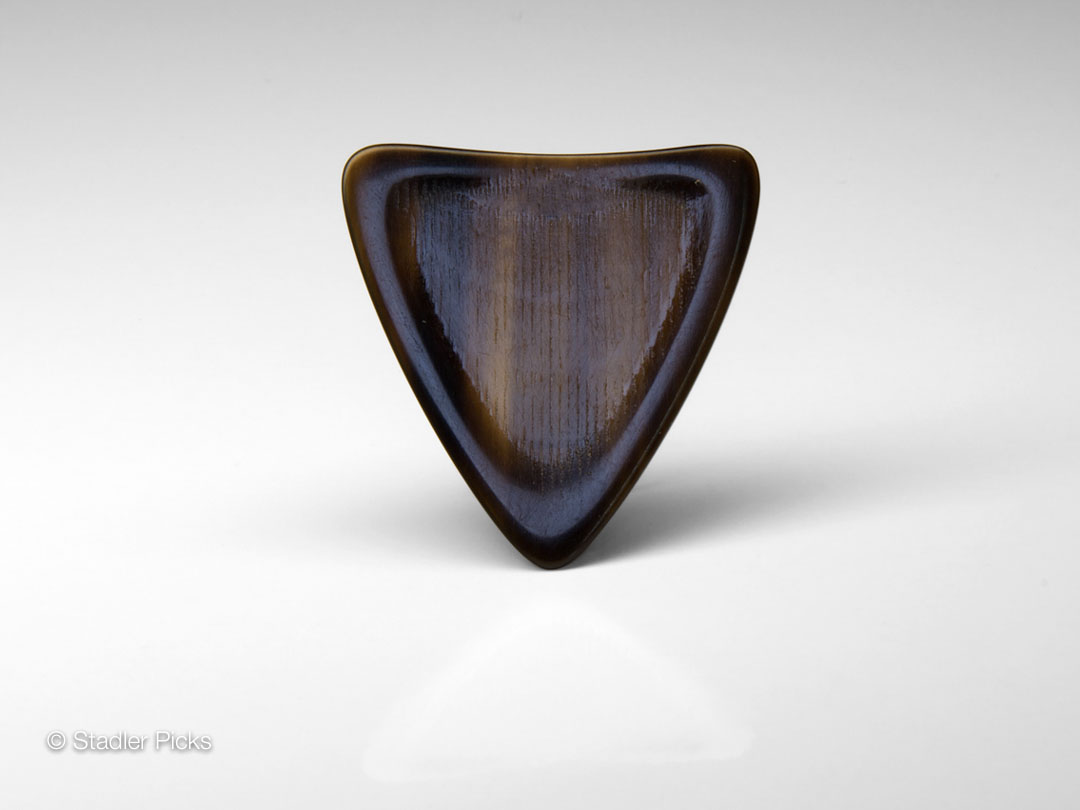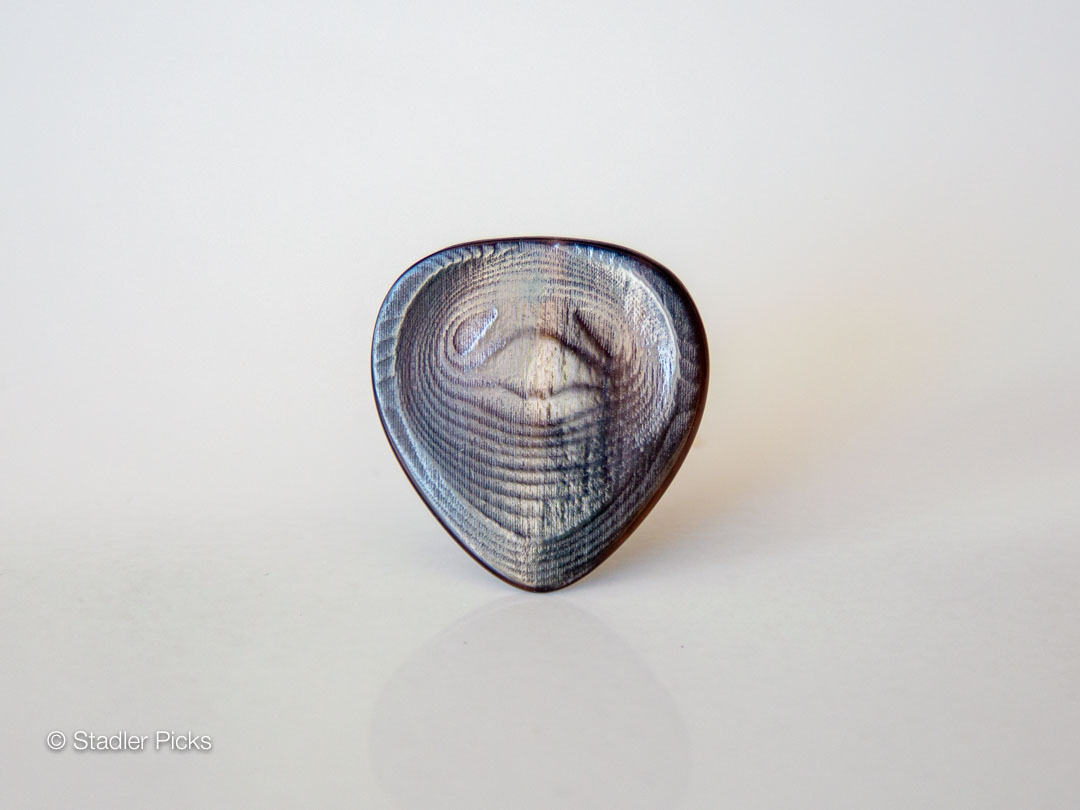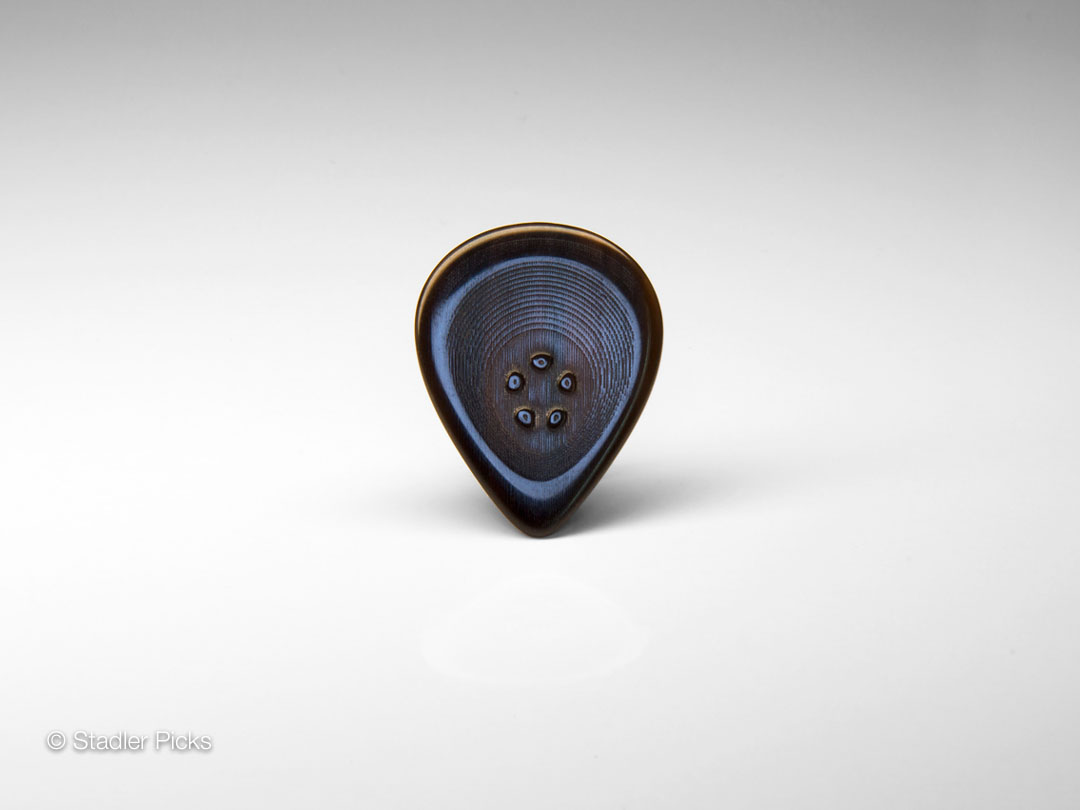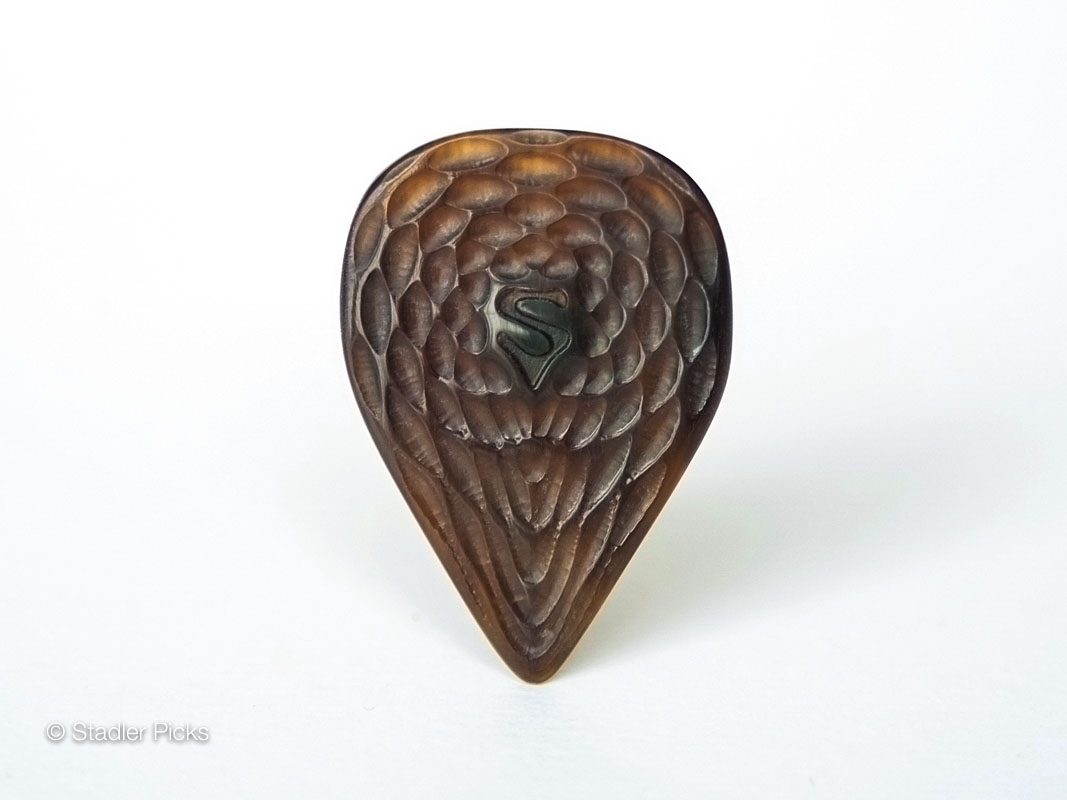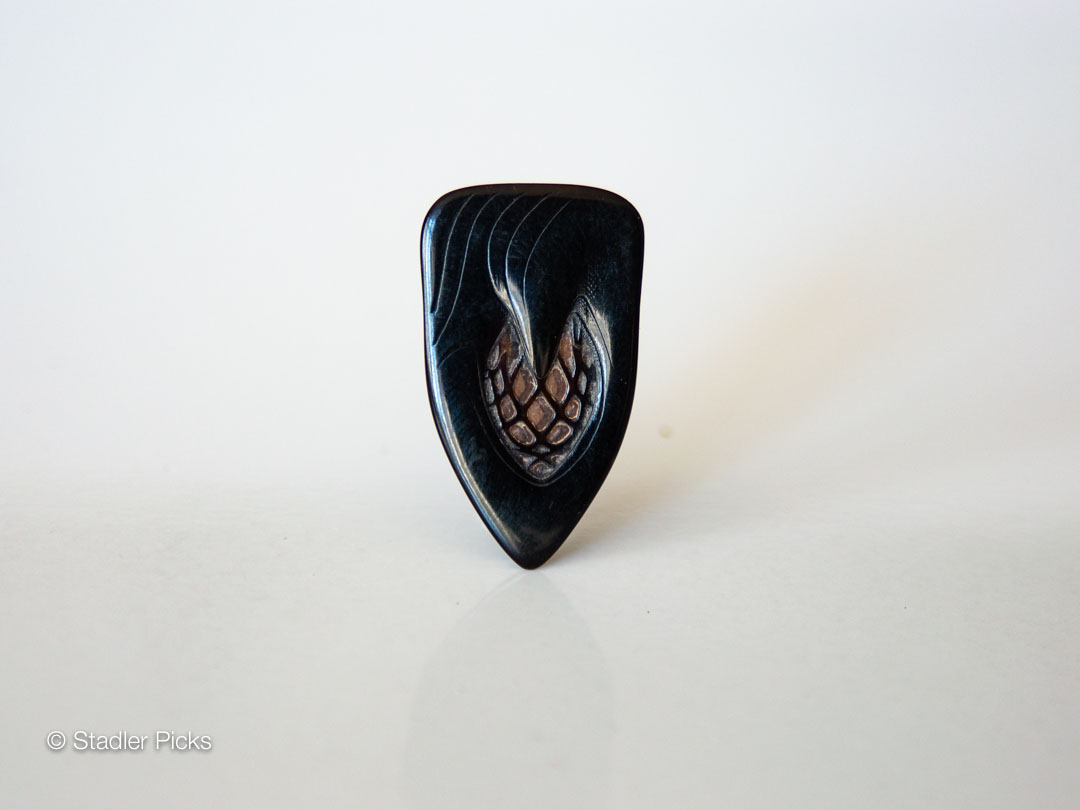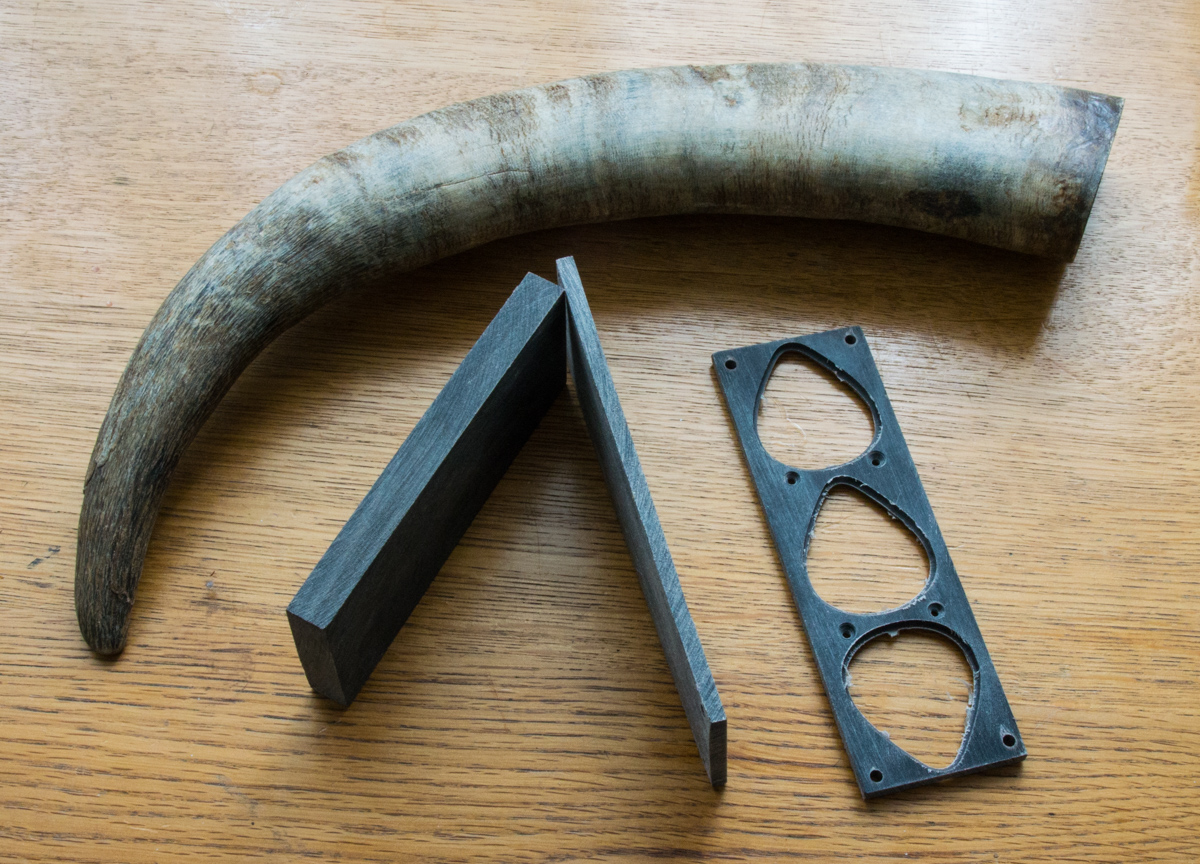The missing link …
It has always amazed me that in many discussion about guitar technique and gear one element is often dismissed without much consideration, the humble little tool that allows a guitarist to transfer his skill and inspiration to the guitar strings.
My quest in designing guitar picks has always been fueled by the belief that it is this single point of contact that allows a myriad of subtle variations of expression. It’s where the rubber hits the road so to speak. The way it excites the strings, the way it bends and flexes, the way the edge glides or hooks, the way it sounds and the way it holds in your hand are such important features that are often overlooked.
The materials and 3D ergonomic shapes i use procure a better, more comfortable grip than flat plastic picks and the highly polished edges ensure a smooth and controlled interaction with the strings. A wide selection of designs offer a lot of choice to accomodate most players pick preferences and styles. Custom orders allows players to taylor any given model exactly to their preferences by choosing the exact shape, thickness and tip or edge profile they desire.
I always continue to work on new designs and refine existing models from the feedback i get through guitarists around the world… and from playing and testing them myself.
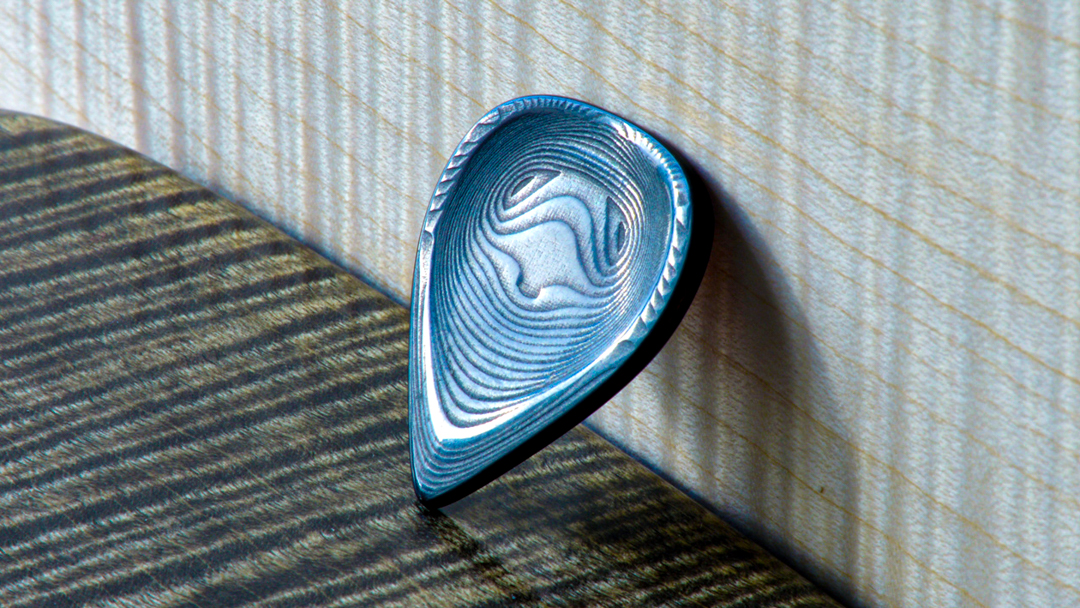
The beauty of ergonomics
One thing that a lot of guitarists struggle with when using ordinary picks is the issue of grip. With a flat shape the only way to keep a pick in the same position is to grip it so hard it doesn’t move. The problem is that the tighter your fingers grip the more your wrist tightens up. And a tight wrist is not very advantageous for good string control and dynamics. With a relaxed wrist you gain a much larger array of attack dynamics and variation. Another problem with flat shaped picks is that your fingers can’t feel which direction the pick is pointing. There is no tactile reference for your finger tips to feel the position of the pick.
Human fingertips are probably the most sensitive skin areas in the animal world so why not take advantage of these amazing sensory receptors to help keep the pick in place and reduce the amount of pressure that is needed to hold it in the optimal position. With a 3D ergonomic pick your fingers can finally intuitively sense it’s position and you can hold the pick very loosely and still maintain it’s ideal orientation. The little decorative ridges i carve into the picks further help with this phenomenon and the result is a very relaxed wrist without having to ‘fight the pick’. Alls these properties are beneficial for any levels of players, from beginners to advanced players and guitar heroes.
In search of the ultimate pick materials
After many years of trying out all kinds of materials I finally found a set of materials that have all the perfect properties i need for making my picks. These materials hold shapes and fine detail well and the edges are very hard when polished. Horn doesn’t become slippery when wet (it also feels very nice to the touch) but most of all it has a very distinctive sound as close as it gets to the sound of fingernails.
Horn is like little strands of hairs fused together, so it has this wonderful organic flex which makes it react with the string in such a beautiful way allowing a very wide dynamic range. Horn makes for great flexible picks due to this property. On acoustics, archtops and piezo systems the unique warmth and overtones of the natural horn material are especially perceptible and on electric guitar speedy licks and pinch harmonics come easily.
I use the following 4 materials for my picks:
- Water Buffalo Horn (Keratin)
- Himalayan Ram’s Horn (Keratin)
- Tagua Nut (Palm Tree Endosperm)
- Vintage Galalith (Casein)
Custom Shop – truly ‘your’ pick
My ‘True Customs’ picks are crafted individually taking into account the anatomy, playing preferences and esthetic tastes of the players. This process results in a true custom pick, one of a kind and truely ‘your’ pick. The initial cost covers the whole process of designing and computer modelling of your pick but after the initial crafting of the custom picks the same design can then be always re-ordered at a significantly reduced price. Included in the initial price is a nice wooden pick box.
The best starting point for ordering is always to send me a list or pictures and dimensions of some of your favorite picks and answer a couple of short questions. This will give me most of the parameters i need to choose one or several of my designs suited for your needs and adapt them for your fingers and playing style. A good process is also to send me one of your favorite picks that you’ve been using for a while. The wear on the pick will tell me a lot about how you play already and i can match any gauge/feel more easily.
You can then optionally get a prototype which will only be finished on the playing edges and give you the possibility to test the design and then request adjustments to the shape/size/gauge to fine-tune it perfectly. After that (or if you want to skip the prototype stage) i’ll usually make a set of 3 final picks of the chosen design for you. Small adjustments to the design of re-ordered picks are usually included in the reduced price so you’ll be able to fine-tune your design even more over time.
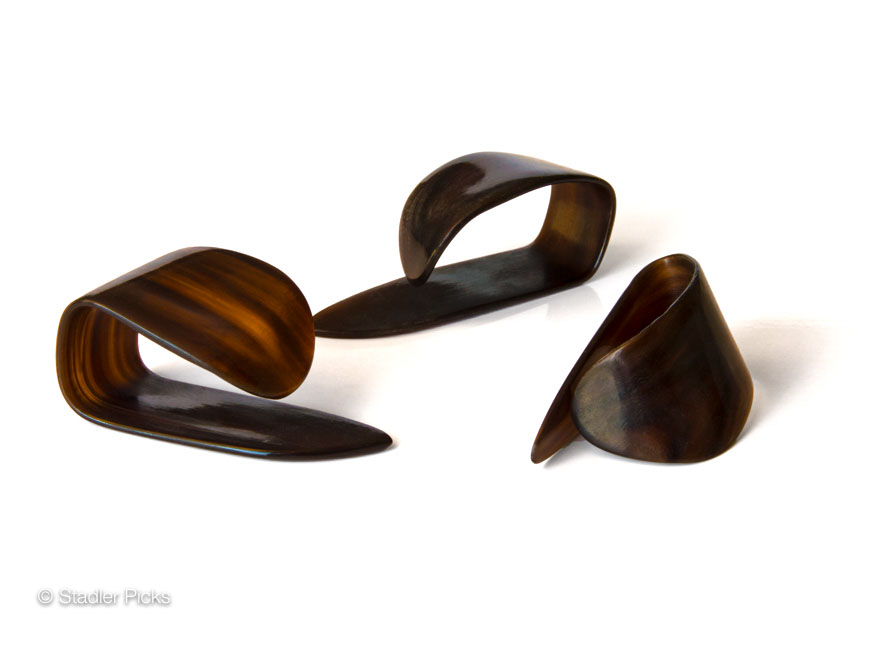
Your Title Goes Here
…
Overview of a custom shop order process
Please note that i would not recommend ordering a customized pick as a first step if you have never tried one of my picks before. The reason is that my picks are very different from ordinary picks, both in terms of materials as well as shape, soumd ad feel. If you have ever played with an ergonomic 3d shaped pick nor played a natural horn pick it will be too abstract to come up with a set of criteria for customising a pick with no reference experience. Although most players who order a custom pick also take advantage of some kind of personalisation and aesthetics it’s mostly about sound and feel and for that a player would need some kind of reference on which to build the specs for his picks.
Step 1
Unless you already have something specific in mind the first step for me is to find out what kind of picks you play/like/dislike and how and what kind of music and instruments you play. Some of the things i will need to know:
- stiff, medium or soft picks ?
- thick or rather thin ?
- guitars you have/play
- kind of strings
- styles of music you play
- How much do you play (h/day or h/week/month) ?
- do you play aggressively or softly ?
- personalized decoration/engraving (initials/band logo) ?
… and anything else that’s on your mind
With that information i would recommend one or several of my designs and materials best suited for you to choose from as a starting point of your customization.
Step 2
Once we agreed on a design i will need a bit of info about your finger size and how you hold your pick and what exactly you want from the pick, some people have specific problems they want to address and different people have different likes/dislikes in terms of tip shape, flex, grip texture, shape, size .. etc. This will allow me to spec the size and ergonomic adjustments so the pick will ‘feel right’ in your hand.
Step 3
If you want to personalize the decoration of the pick (engraving or artwork with logo) you can submit ideas/pictures/sketches and i will see how they can be adapted. At this point however not everything is possible, the point of my pick designs and the complicated manufacturing process is to make the best possible picks in terms of playability and sound so there is a limit to what can be done in decoration (especially with typography) without compromising the playing quality of the pick.
Step 4
You get the final quote for the pick(s) in your order. If you want to go ahead and order you can then pay either via Paypal or bank transfer. Since this is now a custom pick order to your personal specification I do not currently offer a money back return policy once you have paid.
Step 5
Once I received the payment your pick(s) go into production and are usually shipped within a week.
Available customization options
- Base Model / Shape
- Material
- Width / Height
- Thickness & Flexibility / Hardness
- Tip shape
- Edge Profile
- Decoration / Artwork / Branding
- Prototypes & Final Quantities

